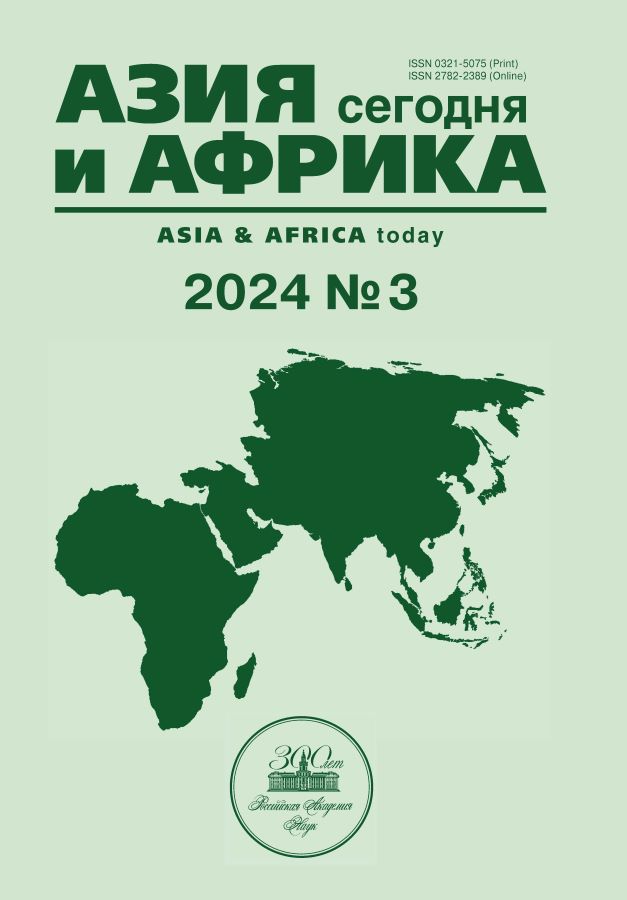“Little Mogadishu” in Stockholm, or “Apartheid with a Friendly Face” in Sweden
- Авторлар: Gorokhov S.A.1, Dmitriev R.V.1, Agafoshin M.M.1
-
Мекемелер:
- Institute for African Studies, Russian Academy of Sciences
- Шығарылым: № 3 (2024)
- Беттер: 57-65
- Бөлім: Politics, economics
- URL: https://journals.rcsi.science/0321-5075/article/view/257213
- DOI: https://doi.org/10.31857/S032150750030456-3
- ID: 257213
Дәйексөз келтіру
Толық мәтін
Аннотация
Негізгі сөздер
Авторлар туралы
Stanislav Gorokhov
Institute for African Studies, Russian Academy of Sciences
Email: stgorohov@yandex.ru
ORCID iD: 0000-0001-9984-6054
Dr.Sc. (Geography), Professor, Leading Researcher, Centre for Global and Strategic Studies Moscow, Russia
Ruslan Dmitriev
Institute for African Studies, Russian Academy of Sciences
Email: dmitrievrv@yandex.ru
ORCID iD: 0000-0003-4018-9832
Dr.Sc. (Geography), Deputy Director Moscow, Russia
Maksim Agafoshin
Institute for African Studies, Russian Academy of Sciences
Email: agafoshinmm@gmail.com
ORCID iD: 0000-0002-0245-0481
PhD (Geography), Senior Researcher, Centre for Global and Strategic Studies Moscow, Russia
Әдебиет тізімі
- Мелин Я., Юханссон А.В., Хеденборг С. История Швеции. М.: Издательство «Весь Мир», 2002. 400 с.
- Церкасевич Л.В. Мифы и реальность шведского «дома для народа». Современная Европа. 2019. № 2, с. 163‒174. doi: 10.15211/soveurope22019163174
- Горохов С.А., Агафошин М.М., Дмитриев Р.В. Уязвимые районы как форма территориальной эксклюзии мигрантских сообществ в Швеции: пример Гётеборга. Геополитика и экогеодинамика регионов. 2022. Т. 8. № 3, с. 92‒101.
- Ducas S. 2001. Case Study of the City of Stockholm and the Greater Stockholm Area (Summary). Quebec: University of Quebec, 67 p.
- Hedman E. 2008. A history of the Swedish system of non-profit municipal housing. Stockholm: Boverket, 31 p.
- Eliason M., Storrie D. 2006. Lasting or Latent Scars: Swedish Evidence on the Longterm Effects of Job Displacement. Journal of Labor Economics. Vol. 24. № 4, pp. 831‒856. doi: 10.1086/506487
- Agafoshin M.M., Gorokhov S.A., Dmitriev R.V. 2022. Refugees from Syria and Iraq in Sweden: Resettlement during the Migration Crisis. Baltic Region. Vol. 14. № 4, pp. 98‒112. doi: 10.5922/2079-8555-2022-4-6
- Malmberg B., Andersson E.K., Nielsen M.M., Haandrikman K. 2018. Residential Segregation of European and NonEuropean Migrants in Sweden: 1990-2012. Eur. J. Population. Vol. 34, pp. 169‒193. doi: 10.1007/s10680-018-9478-0
- Valdez S. 2023. Immigrant Integration and Vaccine Hesitancy among Somali Immigrants in Stockholm. In: Lerpold L., Sjöberg Ö., Wennberg K. (eds). Migration and Integration in a Post-Pandemic World. Palgrave Macmillan, Cham. Pp. 365‒383. doi: 10.1007/978-3-031-19153-4_14
- Язык как ресурс идентичности в Европе: антропологическое исследование. Отв. ред. М.Ю.Мартынова. М.: ИЭА РАН, 2022. 536 c. doi: 10.33876/978–5–4211–0284–7/1-536
- Lewis I. 1999. Pastoral Democracy: A Study of Pastoralism and Politics among the Northern Somali of the Horn of Africa. Oxford: James Currey.
- Eriksen T.H. 2009. From Obsessive Egalitarianism to Pluralist Universalism? A Normative Epilogue. In: Alghasi S., Eriksen T.H., Ghorashi H. (eds). Paradoxes of cultural recognition. Ashgate. Pp. 283‒294.
- Borevi K. 2013. Understanding Swedish multiculturalism. In: P.Kivisto, Ö.Wahlbeck (eds.). Debating multiculturalism in the Nordic welfare states. London: Palgrave Macmillan, Pp. 140–169.
- Avci G. 2019. Liberal integrationspolitik. Stärk individen – motverka parallellsamhällen. https://data.riksdagen.se/fil/ 575BDE5E-4DF0-4F77-A6BC-664AE949D94C (accessed 22.12.2023)
- Carlson B., Magnusson K., Rönnqvist S. 2012. Somalier på arbetsmarknaden – har Sverige något att lära? 188 p. https://www.regeringen.se/contentassets/55f58b2bc8fd4f66842e37f54c38fc51/somalier-pa-arbetsmarknaden---harsverige-nagot-att-lara (accessed 22.12.2023)
- Агафошин М.М., Горохов С.А., Дмитриев Р.В. Сомалийцы в Швеции: региональное измерение. Современная Европа. 2020. № 7, с. 132‒143. doi: 10.15211/soveurope72020150161
- Абрамова И.О. Африканская трансграничная миграция и проблемы международной безопасности. Ученые записки Института Африки РАН. 2015. № 2(33), с. 127‒136.
- Фитуни Л.Л., Абрамова И.О. Негосударственные и квазигосударственные акторы Большого Ближнего Востока и проблема «евроджихадизма». Европейское лицо экстремистской угрозы. Азия и Африка сегодня. 2015.
Қосымша файлдар










